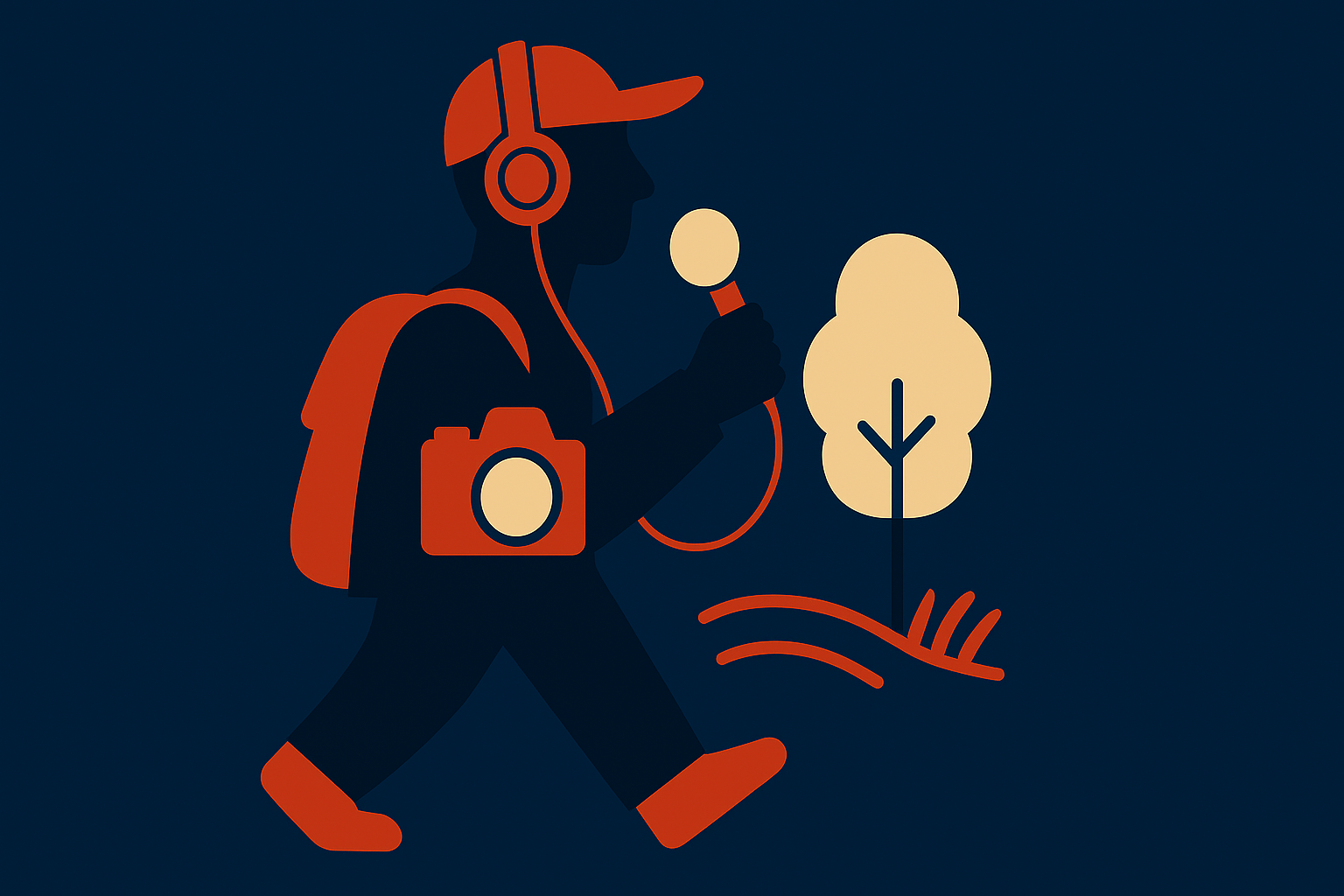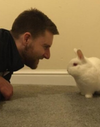10 Lessons From Publishing 500 Podcast Episodes in 5 Years
How do you keep turning up, week after week (and sometimes day after day), for five years straight? Here are 10 lessons learned from a creator who recently celebrated his 500th episode.

"In a world that is increasingly shaped by AI, authenticity matters. People value the real and unpolished moments more than we sometimes realise."
ChatGPT will generate you an entirely functional "how to podcast" guide in seconds. Pure information has never been easier to come by.
But finding a podcaster who has published 500 episodes and makes a living from their show? That kind of experience is much harder to find.
Fortunately, we did! His name is Neale James, and he runs an excellent photography and walking podcast called The Photowalk (see what he did there?).
When you break it down, starting a podcast is actually quite straightforward. Sticking with it is where the real challenge begins.
It's an often-repeated and rather gloomy claim that most podcasts don't make it beyond single-digit episodes. But wherever you are on your podcasting journey, you’ve probably struggled to keep going at some point.
So how do you keep turning up, week after week (and sometimes day after day), for five years straight, and grow your content into a business that pays the bills? Here are ten lessons learned from The Photowalk host, who recently celebrated his 500th episode.
1. Start with momentum
Neale launched The Photowalk in June 2020, just as the UK was emerging from its first lockdown. With time, ideas, and a daily habit already brewing, he got into stride quickly. Recording daily episodes built both confidence and a backlog. Later, the show found a more sustainable rhythm – but those early months provided the momentum to carry on.
"During those three months of lockdown, we decided to take it from weekly to daily. Honestly, it was as much about keeping our sanity as it was about staying connected with people in the creative world. When restrictions eased and we were able to step back outside, I realised I didn’t want to let go of that rhythm. Producing episodes every day helped us reach 500 much faster than the maths would suggest otherwise."
Lesson: Get into the habit of showing up early. You can always slow down later, but it’s hard to build up speed once you’ve stalled.
2. Consistency is everything
The golden rule wasn’t complicated: turn up to work every day. That might mean recording, editing, writing, or simply planning. Even if you publish weekly, you’re still touching the show most days.
"If you want to do something that you really believe in and you want that to grow, you have to show up to work every day."
Lesson: Consistency trumps inspiration. Don’t wait for the muse – start, and the motivation usually follows.
3. Let the format evolve
Over 500 episodes, The Photowalk has shifted names, structures, and lengths. Today it mixes long-form Friday “Photo Walk” episodes (90+ minutes) with short “Reflections” (5-10 minutes). Some are recorded in the studio, others while Neale is out walking by the river with his dog in tow.
"It's had a few incarnations in terms of its style, its format and actually its name very early on. But it's 500 episodes, whatever way you look at it."
Lesson: Don’t be afraid to experiment. Listeners enjoy variety, and changing things up keeps you interested, too.
4. Build community, not just content
What really sustains The Photowalk isn’t just Neale – it’s the listeners. They write in, share personal stories, join trips, and even get nicknames. This sense of belonging has turned listeners into co-creators.
"The community is really important. They're very supportive. They write in, they come on the photo expeditions that we do, and next year we're going to quite a few different countries. Well, I say to them, you're the why of this show and the how of this show. And they are. They're both."
Lesson: Involve your audience. Whether through emails, nicknames, or feedback, give them a stake in your show.
5. Keep it authentic
The walks are recorded on nothing more glamorous than an iPhone and a £5 dictaphone app. Planes overhead, footsteps on gravel, even the dog barking – all left in. Those imperfections give the show texture and honesty.
"Everything else in the show is recorded out on a walk. You hear is exactly what is happening, including my occasional frustration when a plane goes overhead. I used to get annoyed about it, but one day I received an email from a listener who said they were housebound due to illness. They told me they could not get out for walks anymore and were hoping that one day their life would change. For now, the sounds of my walks, even me grumbling at planes, reminded them that there is a world out there. That message taught me something important. In a world that is increasingly shaped by AI, authenticity matters. People value the real and unpolished moments more than we sometimes realise."
Lesson: Get outside and record a walk and talk, if you're able. Authenticity beats polish.
6. Apply radio wisdom
With a BBC and commercial radio background, Neale brought across a few transferable tricks:
"It is about finding those little gems you can add to a show, as long as they suit the style and tone. Things like listener nicknames or regular features can be incredibly powerful. Features, in particular, are important. I had programme controllers who used to remind me constantly to keep them fresh: turn them around, change them, surprise people. Sometimes that meant working with the seven-to-ten minute rule for segments, sometimes it meant introducing something unexpected. All of it becomes part of the mix that keeps a show engaging and alive."
- Talk to one listener, not a crowd.
- Use short segments or features to keep interest.
- Create “catchphrases” or recurring features for familiarity.
Lesson: Borrow from broadcasting. Structure matters.
7. Think like a storyteller
Podcasting is a predominantly audio medium, so use sound to paint pictures. Describe the scene, let the atmosphere come through, and remember that imagination fills in the gaps.
"Radio paints better pictures than television. If you can describe the world through sound, you can spark someone’s imagination in ways that visuals sometimes cannot. I think that is what makes audio such a wonderful medium. We often get caught up in the idea that everything has to be visual, but I am not so sure."
Lesson: Audio is powerful because it’s personal. Trust listeners to build their own images.
8. Find multiple income streams
“I think of it like a jigsaw, and it’s taken a few years for this jigsaw to come together and understand how I can monetise podcasting. The amount of time I spend on it, my wife, rightly, at the start thought, ‘What are you doing? How is this going to work?’ But I always knew that I could monetise a podcast. It just took a while to realise how."
No single revenue source has kept the show afloat. Instead, it’s been a mix of:
- Patreon memberships (nicknamed “The Extra Mile”)
- Sponsorships (secured by reaching out with tailored pitches)
- Mentoring and training
- Photography trips and expeditions
"It’s become the added value of being part of something slightly larger than just the Friday free show, and that’s worked quite well. Enough that it pays the bills and then some.”
Lesson: Monetisation is like a jigsaw. Put enough pieces together, and the picture makes sense.
9. Embrace the challenges
Social media, finding guests, producing content while travelling – none of it’s easy. But the single biggest challenge has always been consistency. Keeping the rhythm going, week after week, year after year.
"I take only a couple of episodes off a year… I have to make enough that I’ve got enough episodes to be going out while I’m away so I can keep this consistency thing."
Lesson: Challenges don’t go away. You just learn to work around them.
10. Look forward, not just back
Even after 500 episodes, Neale is planning new projects – shows beyond photography, ideas still brewing. The milestone isn’t the end.
"I do have long-term plans. I want to launch another podcast… there are two that I want to launch that have absolutely nothing to do with photography. I don’t know when I’m going to have the time to do them, and somehow I need to engineer that..."
Lesson: Keep your eyes on the horizon. Growth comes from what’s next.
The Bottom Line
Publishing 500 episodes in five years isn’t about extraordinary talent or expensive kit. It’s about showing up, involving your community, being authentic, and letting the show evolve.
You don't need to set goals to hit 500 episodes or five years. Just commit to working on your next episode. Make it as good as you possibly can. And once you upload it, do the same thing again.
Keeping things simple and sustainable gives you the best chance of podcasting for the long run. One tool that'll help you do just that is Alitu. Not only can you record, publish, and distribute your show from within the Alitu dashboard, it's also packed full of tools and features for the time-starved or non-techy creator. Some highlights include:
- Automatically generated transcriptions
- Text-based editing (edit audio like a word doc)
- Automatic filler word and silence removal
- Auto volume levelling, clean up, and mastering
- Variable playback speed to edit episodes in half the time
Try it out yourself, free for seven days, and see what you think!

